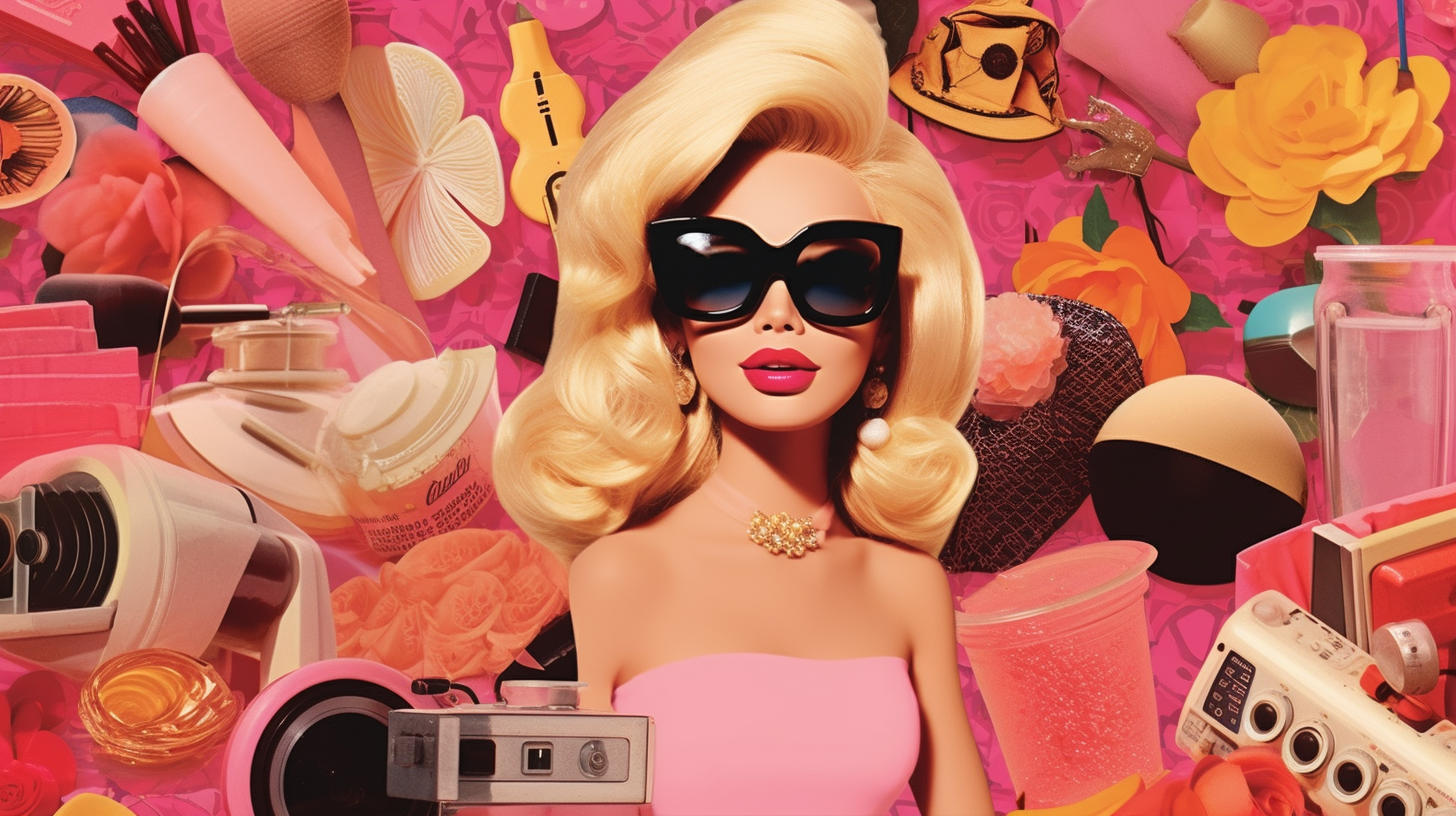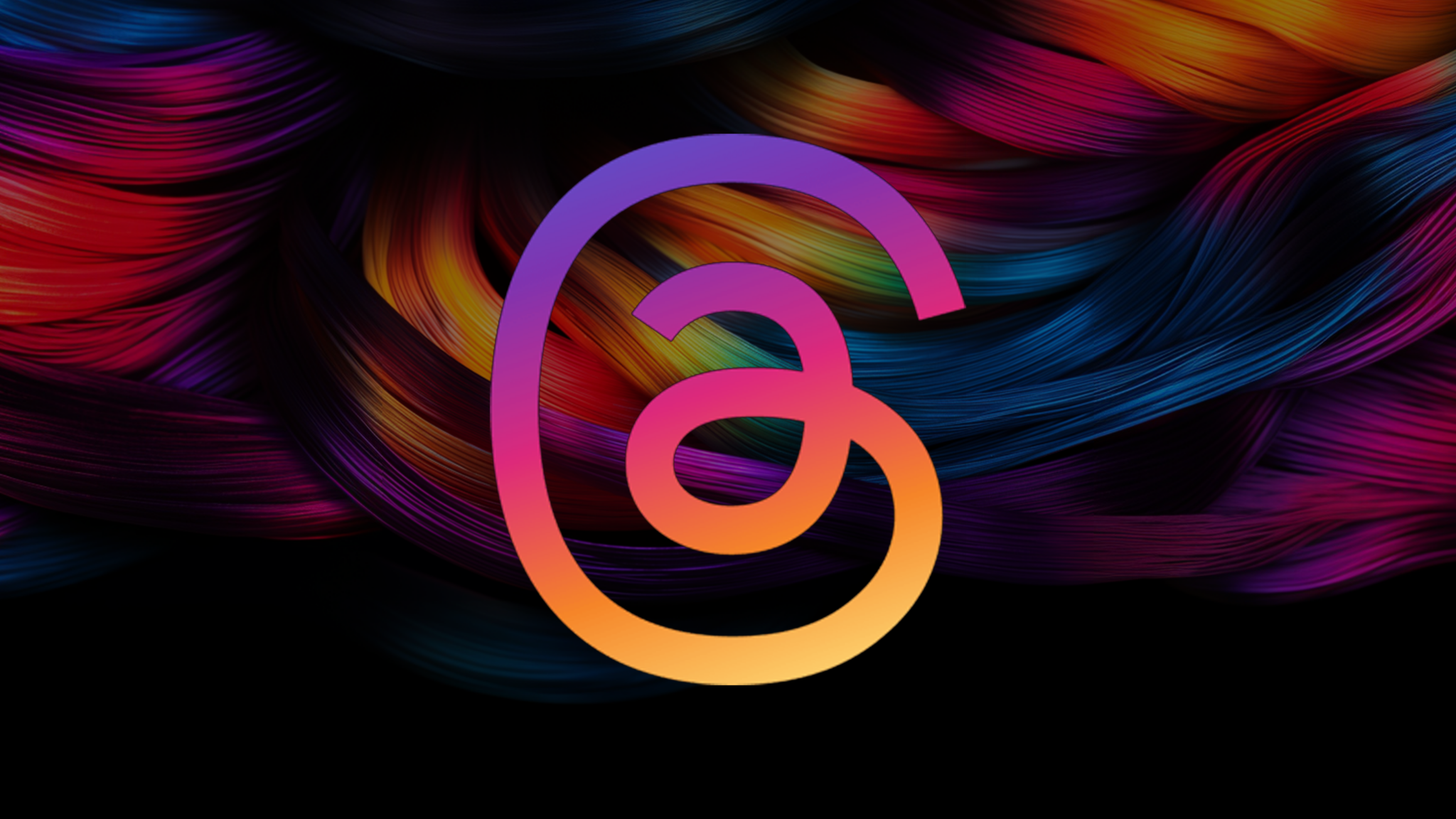| Editor’s Note: This three-part series explores not only the importance of branding and how much it really matters, but some of the key logistics you need to know in order to create a truly Incredible brand. Here are links to each part of the series: Part 1: Your Brand Is So Much More Than Your Name Part 2: Does Your Brand Even Matter? Part 3: How to Build an Incredible Brand in 7 Steps (Infographic) Bonus: Top 7 Best Aesthetic Brands |
Need to be a branding pro in 30 seconds? Read our TL;DR.
Walk with me. I want to take you to a little place known as “I Just Opened Up My First Medical Practice” lane. It’s a new community, tract homes, to be exact. Each home on the tract represents a new medical or aesthetic practice.
Here’s the interesting part: every single one of them was painted blue and white by someone who thought that the colors of their new practice needed to reflect the fact that they were a doctor or medical professional.
Every. Single. One. Blue and white, as far as the eye can see.
Why? Well, doctors wear white coats, right? So that has to explain the white. The blue? Probably the stereotypical scrubs that you see throughout hospitals and medical offices everywhere.
At some point, these two colors were engraved in the general public’s heads as “medical colors,” or engraved, at least, in the minds of the people who are creating medical brands.
These blue and white houses also share another fascinating feature: geographic names. “Plastic Surgery/Aesthetic Medicine of [INSERT GENERIC CITY NAME HERE]” seems to be the preferred formula for practices far and wide.
It’s like that scene in the Harry Potter movies, where we see blocks of identical houses and cars on Privet Drive.

As it turns out, yer not a wizard, Harry.
Not a marketing wizard, at least, if you are using either of those generic approaches.
Your brand is perhaps one of the most important decisions you can make about your practice, and if you are using a blue-and-white color palette coupled with a geographic name and calling it a day, then you aren’t doing yourself any favors.
Spend some time figuring out something truly creative and unique — something you can be excited about.
It might take some time, but years from now when you are elbow deep in patient sign ups, you will thank yourself when you have a patient list as long as a Walgreens receipt.
Once you’ve done that, you are done with all your branding, right?
…Right?
Bad news, bud.
Branding, at least when done right, is so much more than your name.
Let’s find out how.
What Is Branding?
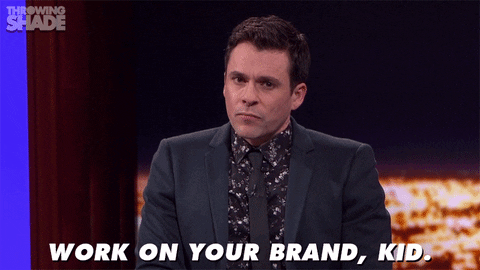
Branding, explained to a five-year-old, would be the symbolism, imagery and text by which your practice is identified. But it does go deeper than that — it is the process by which you give meaning, personality, and life into your practice.
It is the mechanism responsible for building much of its reputation, and is the sole driver responsible for differentiating yourself from the rest of the market.
In short, branding is everything.
It does include your colors — although hopefully not the fascinatingly unique combination of blue and white — as well as your logo and name, but, again, it’s even more than that.
It is your practice’s entire identity.
So once you’ve decided on those simple pieces of the puzzle, you need to do the rest of the leg work if you want your brand to be great.
Fortunately for you, the work only gets harder.
What Makes an Incredible Brand?
Before I get into the specifics of how to make a good brand, you first have to understand the 3 Tenets of Great Branding: connection, uniqueness, and viscerality.
Connection
The whole point of creating a brand, a name, a logo, selecting colors, or any other identifying components is to give people some kind of icon or symbol to associate your practice with. It’s about building connections with your audience, patients, and potential patients.
So before you even decide to start browsing color palettes, make sure you have a fundamental understanding of who those people are that you are looking to resonate with.
What are they looking for in a provider? What kind of brands do they trust? What brands aren’t really resonating? What are some of their unique attributes? Do they even like the color blue?
Your brand is the first impression made on all of your connections, so it needs to be a good one.
If you’ve ever noticed that Coca-Cola advertises a whole lot in places where people have positive experiences, you just stumbled upon an example of a big brand making a connection with those people in situations where they are happy.
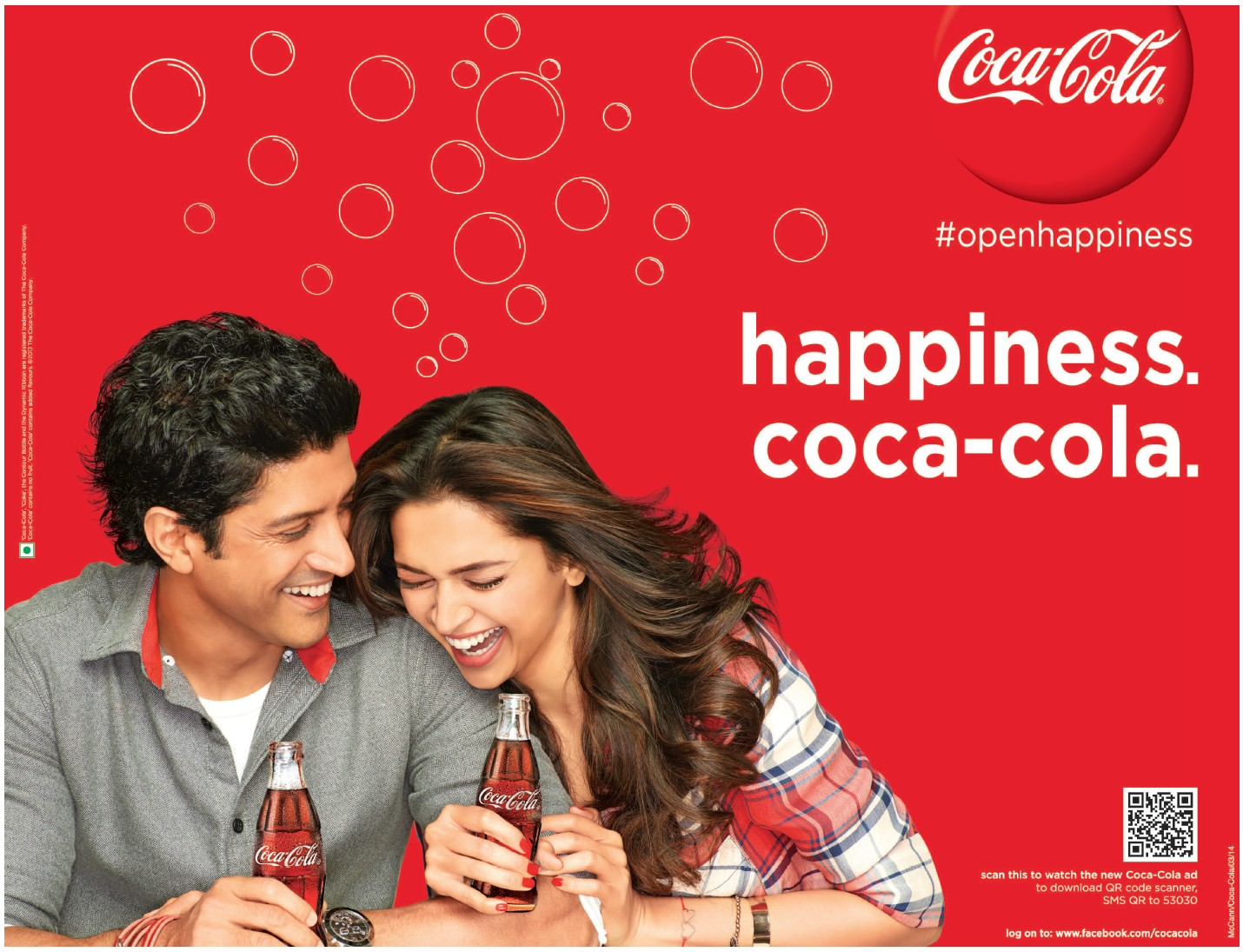
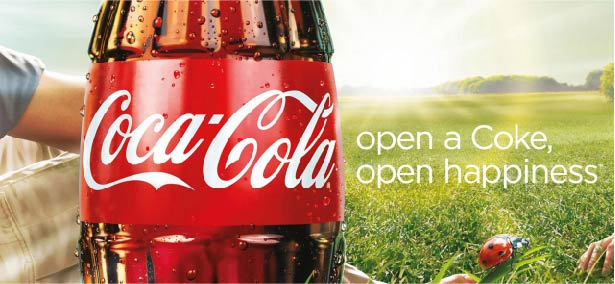
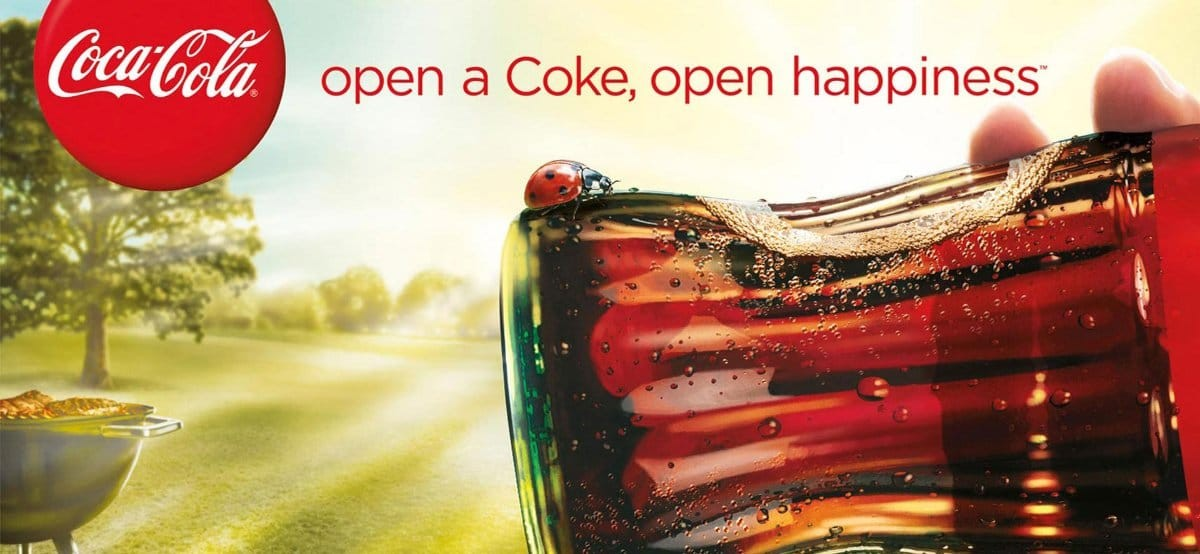
Coke has put a lot of work into associating their brand with happiness. A ball game here, a movie theater there, a theme park here… eventually, the hope is that their brand creates a connection with people at those events.
More intricately, they hope that their brand is associated with all the joy that those events brought to those people.
Have you ever sat down and thought about what your practice and brand is doing to build similar connections? Have you ever even tried?
Uniqueness
Of course, connections mean nothing if you simply blend in with the rest of the industry around you. This is why uniqueness is also one of the guiding principles — you need to stand out, almost at any cost, if you want to build a practice that people become advocates for.
Getting lost in the sea of “Aesthetic Medicine of Miami” offices is, to be frank, kind of lazy, but it’s also bad marketing if you want to be seen as unique.
(Sorry, Miami. Incredible loves you.)
You do want to be seen as unique because uniqueness to your patients means recognizability. And recognition means more consistent patients and business. Consider this stat from Reuters:
82% of investors say name recognition is an important factor guiding them in their investment decisions.
Not to mention, 71% of consumers said it is somewhat or very important to recognize a brand before making a purchase.
We see a lot of providers use geographic names because they think it adds credibility to their practice. While that might have been the case before digital marketing or before aesthetic medicine became such a competitive industry, it is no longer really the case.
Be creative, unique, bold — if you can’t be those things, at least don’t be boring.
We helped The Salt Facial, a division of Merz and a client of ours, achieve a very unique and visually interesting identity by finding three uncommon colors to use as accents for their primarily black-and-white palette.
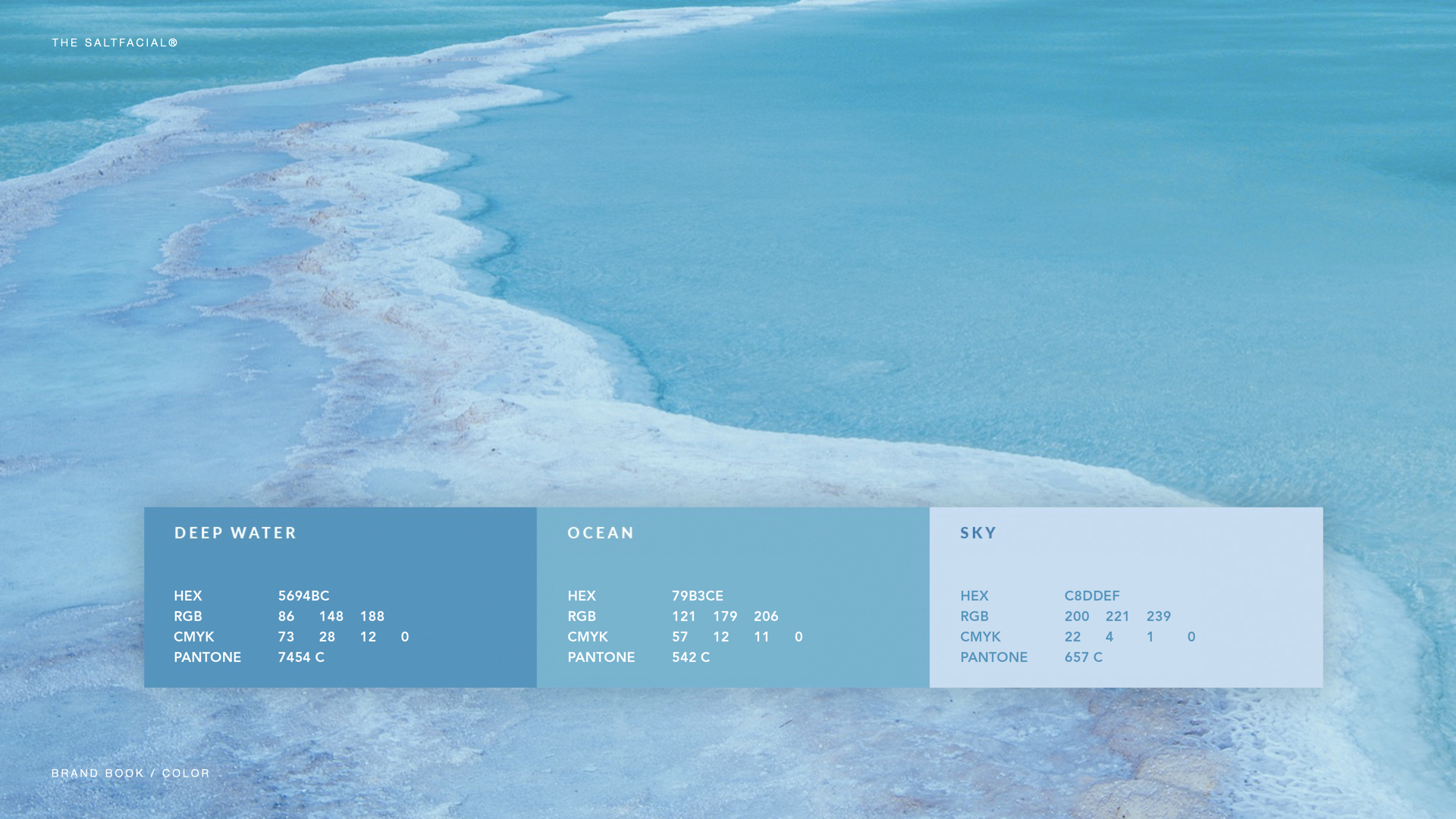


Color is just one way you can set yourself apart — there are plenty of other opportunities that I will dive into later in this article. For now, just enjoy the banger color palette.
Viscerality
When we talk about having a visceral experience in marketing and branding, we are talking about feelings or emotions that people feel on a deep level, similar to what someone would experience in an exhilarating or frightening moment in real life.
When applied to your branding, though, we are talking about creating as provocative an experience as possible. We want to trigger those deep, primal emotions that people have and use them to build the way you are perceived.
Why? Because 94% of consumers say they recommend brands they have an emotional connection with.
Take a look at this image below from the brand book of another one of our clients, BIOLITE.

Some of the words that BIOLITE wanted to associate themselves with were: experience, luxury and sophistication. When you look at these images, you are immediately transported — you can feel what it is like to be the woman walking down the hallway.
Your brain is making a million connections without you even realizing it — this is the power of viscerality.
Understanding the Psychological and Creative Components
Branding is a psychological game. So it’s time to channel your inner Jordan Peele and get to work.

(Just kidding, they don’t need that kind of viscerality in their lives. Let them be.)
From a psychological standpoint, great branding achieves two things: 1) portrays the right identity and 2) humanizes your practice.
Portraying the Right Identity
We mentioned it briefly before, but before you can go about doing anything with your brand, you need to understand your target audience and demographic on a fundamental level.
This means spending many hours creating patient personas to focus on, figuring out what kind of content they engage with, what kind of marketing strategies work, what their values are, etc. etc. etc.
Emphasis on the three etceteras. This is a ton of work, but it is the only way you can prepare yourself for the monumental task of creating your brand.
After all, your marketing is never about you, it is always about your patients.
And once you understand your patients, you can understand what kind of brand will successfully capture their business and attention.
Are you luxurious or accessible? Personable or exclusive? Experimental and cutting-edge or masterful at the classics?
Which of these identities appeals to the largest or most lucrative demographic in your situation?
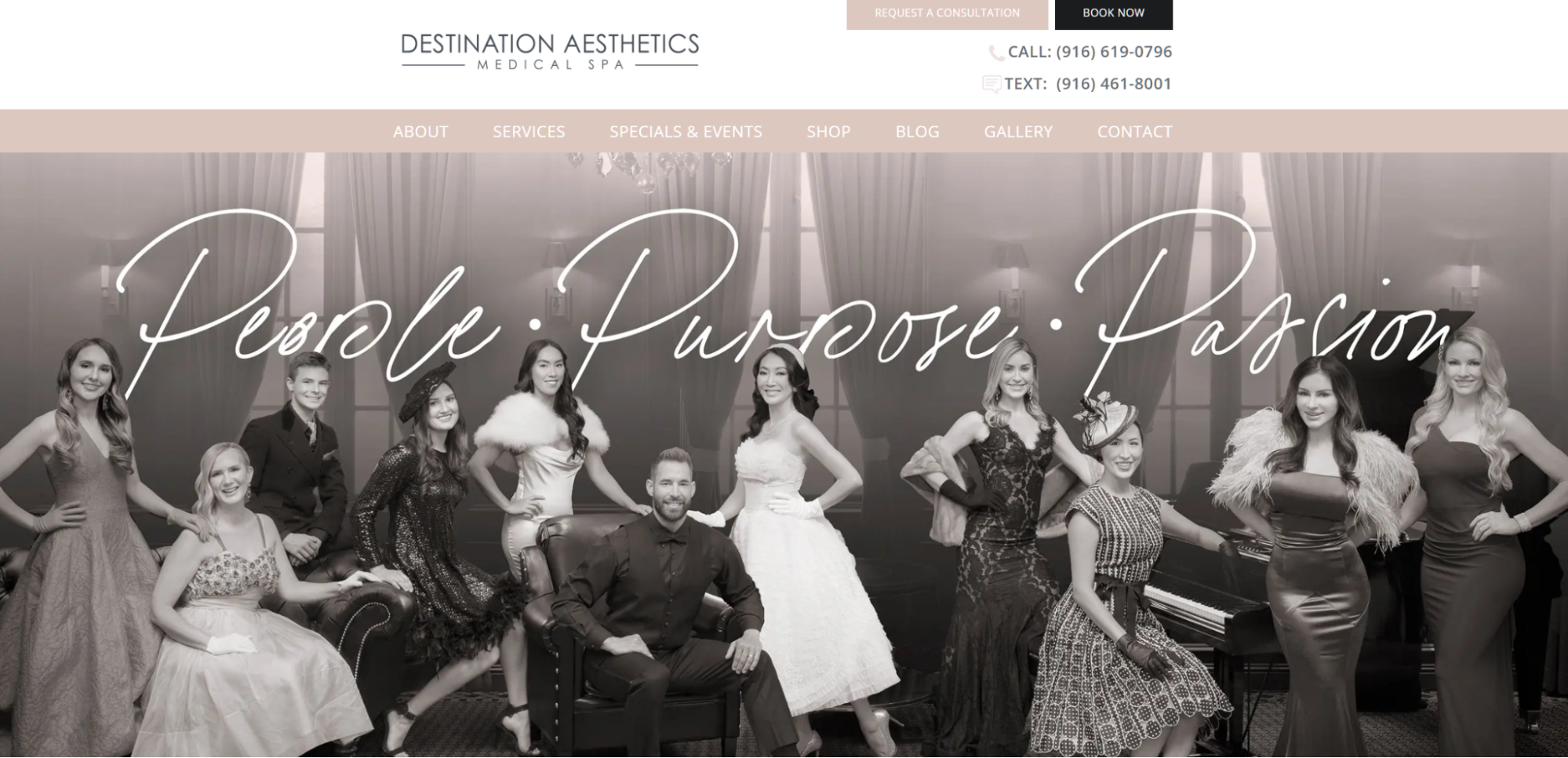
Humanizing Your Practice
It might sound like a strange concept, but the best brands out there have very human-like qualities associated with them. It goes beyond just traits like “luxurious” or “personable,” too. Humanizing your practice means giving it things like values, heritage, personality, and soul.
Why bother? Because, even the grouchiest doctors and the whiniest patients out there need human connection to thrive, and when you humanize your brand, you are tapping into the powerful need for human interaction.
Not to mention, 77% of consumers buy from brands that share similar values to them.
It might seem far fetched, but if you think carefully, you probably already know at least one brand doing this pretty well already.
Levi’s
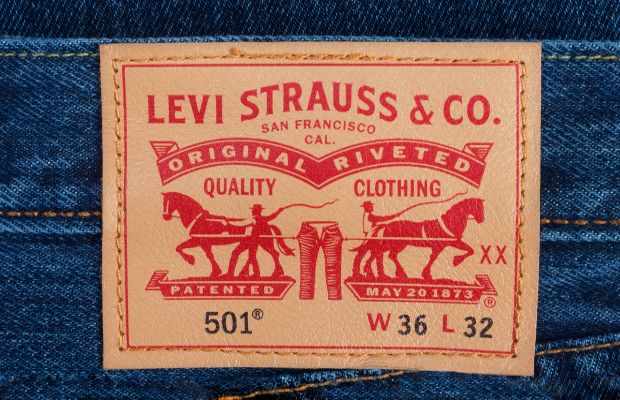
Levi’s is a brand that has been around since 1873. It was invented by Jacob W. David for workers who migrated to the American West in search of fortune. The work was often hard and strenuous, and the people needed pants that could hold up.
It’s a true heritage story and one that has been earned through well over a century of business. Even in their new marketing efforts, Levi Strauss is finding ways to capitalize on that heritage and maintain its image of being an All-American, reliable brand.
But what if you haven’t been open for 100 years? How are you supposed to create a concept like heritage from thin air?
Come in closer because you aren’t going to believe me when I tell you this… Are you ready?
…you steal it.

Here’s the thing: you will never be able to go back and be a practice that has been around since Ulysses S. Grant was president. But you can tap into the ideas that were around at that time.
For example: When you think about the idea of whiskey, most people will drum up some kind of imagery of well-dressed men sitting around a study, talking about the politics or ideas of the time.
Maybe you think of a single person sitting at a large, solid wooden desk with an intricately designed clear glass, topped with a heavy pour.
(We have some real Peaky Blinder vibes happening with this imagery.)
But now take a look at Woven Whiskey, a company created in August of 2021. They are by no means a heritage brand, nor are they even strictly in the business of making whiskey.
But they have tapped into those ideas, the ethos, of what it means to drink and engage with the drink on a foundational level.

Photo Courtesy of Woven Whiskey
Read this passage from their about page:
“To us, blending is more than an action, it’s an idea. Blending is creativity. Blending is community. Blending is collaboration. Blending is exciting, it is discovery. Blending is how new ideas are born. Mixing possibilities, connecting disparate peoples and passions in order to create something new. Blending is a richer life. Something deeper. Something more delicious.
We believe blending is a fundamental human trait. A human need. It makes us all better, stronger. It makes us greater than the sum of our parts.”
Look, if this passage doesn’t scream “suited intellectuals around a campfire discussing philosophical conundrums,” I think you might be the first person in history to be marketing-proof.
In which case, come with us, the FBI would like to have a word with you.
* * *
If you are thinking to yourself “Aye mate, I am not in the business of pushing pants or whiskey, what the hell are you on about…”
I got two questions for you:
Firstly, we don’t get a lot of people from Britain around here. It must’ve been the early Harry Potter reference — anyway, how are you all doing after, well, the recent… transition?

Secondly, you might not be in either of these industries, but the same concept applies. Tapping into heritage ideals and concepts promotes connection, and connection promotes business.
Luckily for you, the pursuit of beauty and youth goes back as far as our histories and stories can take us, and there is plenty of ethos to capitalize on as someone in the aesthetic industry.
BespokeRX is a great example of branding around the heritage of beauty and rejuvenation.
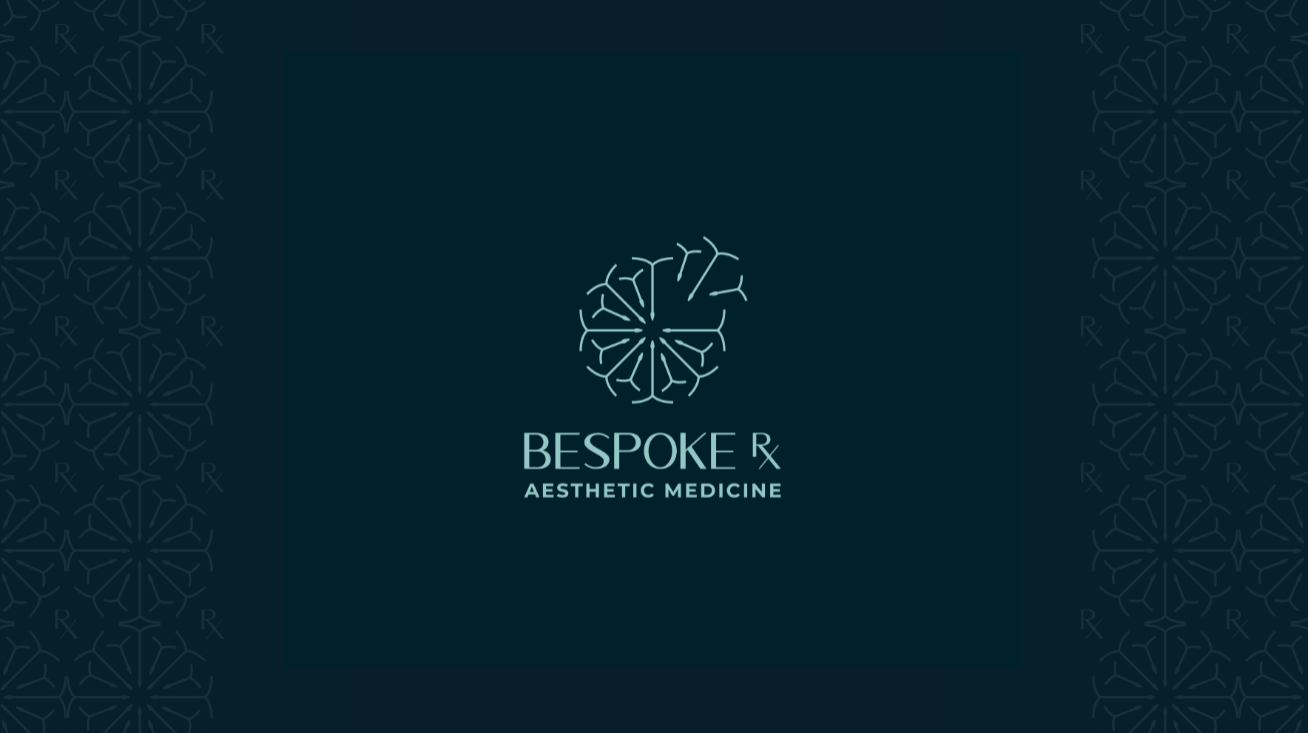
Don’t take it from me, though. Take it from my man Zack, Chief Creative Officer at Incredible Marketing:
“Bespoke’s branding really captures beauty and youth in many ways, but it all begins with the symbology of the dandelion in their logo. Dandelions represent resilience and rebirth as a result of healing physically and emotionally, overcoming difficulties, and having a youthful attitude and long-lasting happiness.”
As I said, it doesn’t matter if you are pushing pants, whiskey, Botox, or a Mommy Makeover; humanizing your brand with things like heritage and soul can go a long way toward improving your practice.
Heritage is also only one aspect to focus on, and, as we mentioned earlier, there are others, like values and personality, that we could spend just as much time talking about.
For your sake (and for the sake of this article’s SEO performance), we will assume you get the point and move on.
Understanding the Technical and Practice Usage Components
Up until this point, most of the conversation has been about these very ethereal, mystical ideas like heritage, personality, and soul. It’s been a philosophical and psychological journey.
But the truth is that a good brand has to be practically good as well if it wants to perform. That means keeping an eye on things like well-developed brand guidelines, consistency and even brand flexibility.
Brand Guidelines
Typography, color, tone of voice, iconography, and logo design parameters. When we say “brand guidelines,” these are the big ones when referring specifically to the logo.
Here is an example of a logo lockup, or logo design parameters:
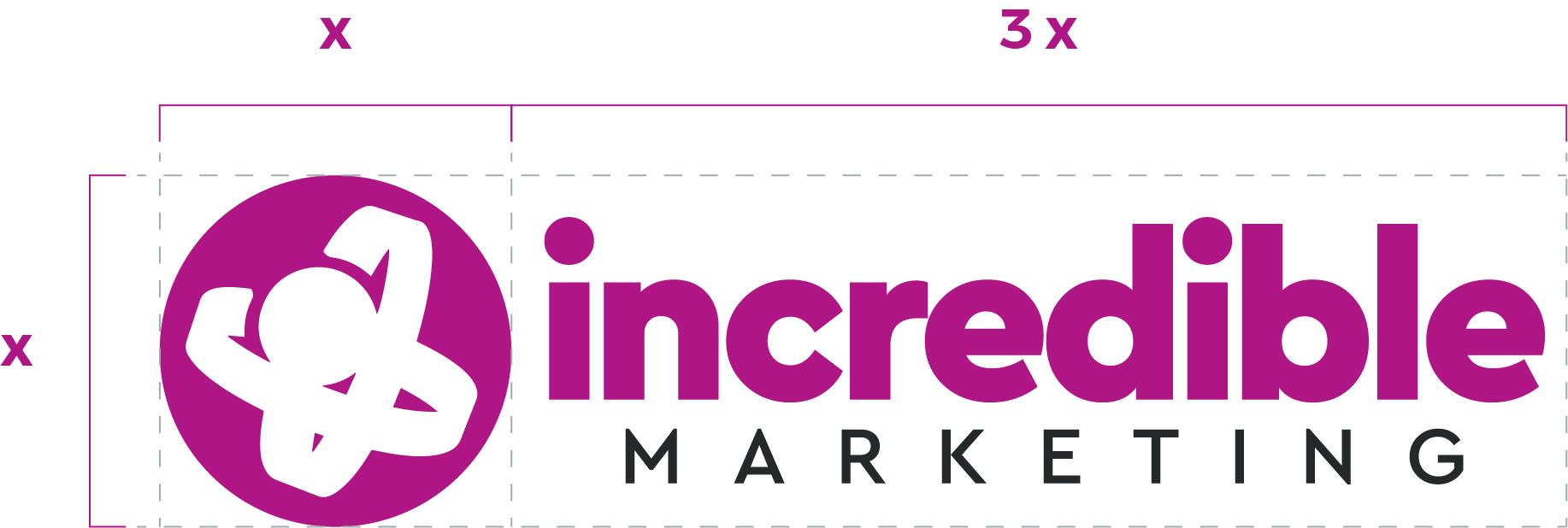
This information ensures that the integrity of the design remains constant wherever it ends up living. For continuity and recognition purposes, this is a pretty important safeguard to have.
Typography is pretty simple: it is the font or fonts you use in your logos and name. There are virtually an infinite number of fonts you can use within your branding and logos.
We only have two recommendations: stay away from Papyrus, and back up off our Montserrat, bruv.
(Just kidding… kinda.)
As you can see from Incredible’s own logo, color choice can say a lot about your brand. Magenta can mean a lot of things: that Incredible has a certain uniqueness or creativity about it.
That it embraces the aesthetic industry and is not a brand you should quickly forget.
But most importantly, there is a boldness to Incredi-genta.
There’s a willingness to look our clients in the eyes and say “no, we aren’t afraid to be pink adjacent.”
And while we are on the topic of magenta…
- We were way ahead of the curve on this one: Magenta was literally named 2023 COLOR OF THE YEAR BY PANTONE.
- T-Mobile stole their color from us, not the other way around.
But I digress.
If you aren’t convinced that color is critically important to your practice and branding yet, take a look at this color branding quiz from Reboot Online, where participants were asked to identify the brand based solely on color.
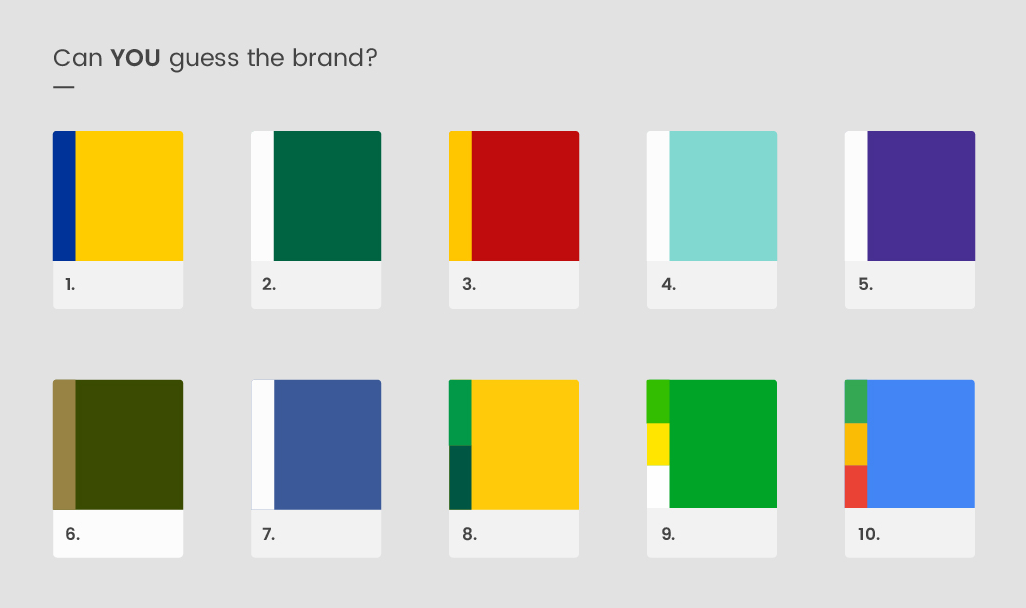
After you’ve tried for yourself, check out these results, which indicate that Google was able to achieve a 91% identification rate:
| ANSWER | % OF CORRECT IDENTIFICATION |
|---|---|
| 1) Ikea | 67% |
| 2) Starbucks | 80% |
| 3) McDonald's | 84% |
| 4) Tiffany & Co | 17% |
| 5) Cadbury | 31% |
| 6) Harrods | 22% |
| 7) Facebook | 73% |
| 8) Subway | 68% |
| 9) BP | 43% |
| 10) Google | 91% |
Your colors, typography and the overall design will have an impact on how you are perceived. But more consequential to that perception is your Tone of Voice, or how you present your brand and practice in your marketing material.
When you send an email, how do you want the email to sound?
Hyper-educational, sarcastic, entertaining, or personable?
How are you going to create that kind of content and what will you say?
Once you figure that out, you’ll have a clear idea of what brand you want to be.
Let’s look to another example outside of the aesthetic industry:
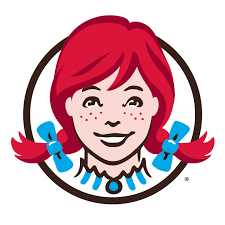
Wendy’s is globally known for its sarcastic tone, especially on its social media channels.
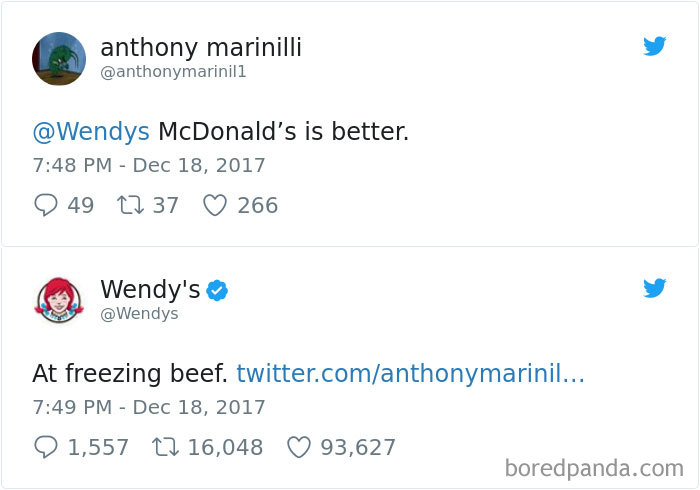
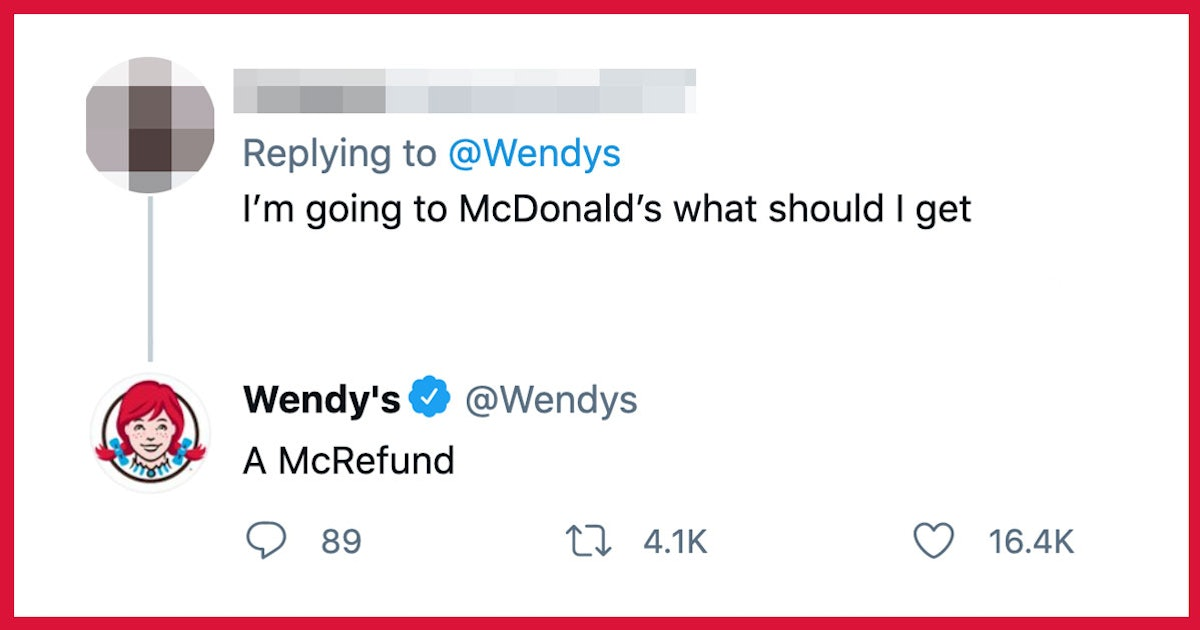
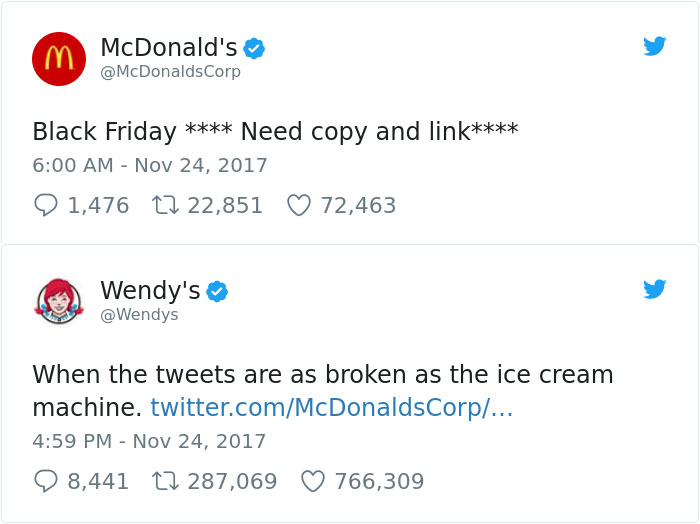
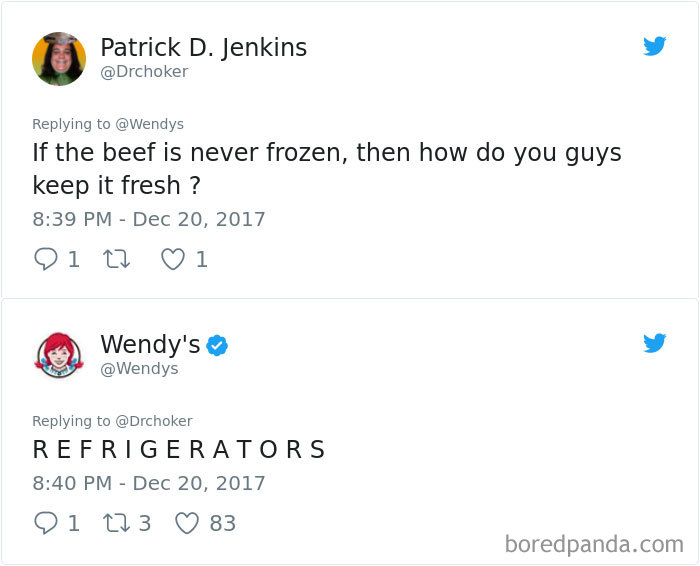
They are just as willing to roast consumers as they are other fast food restaurants. It takes the right kind of person behind the social to pull off this kind of tone, but when it works, it works.
(To be completely honest, the Wendy’s social media team can harass me all they want, it’s not going to stop me from getting my Baconator or spicy nugs anytime soon. Cyberbully away, Wendy’s. Cyberbully away.)
Read this excerpt from California Vein Specialists’ about page:
In our practice, we focus on the patient; getting to know each patient and their individual concerns, and then developing a treatment plan providing thorough, personalized medical treatment.
They remain consistent in their messaging throughout their website, but especially in their blog, where they produce Patient Journey content about people like Dylan Zeigler, who had life-changing treatment and is now a huge advocate for the practice.
Actually, now that we mentioned consistency, I want to talk about it a little more because of how important it is to your branding.
Keeping Your Brand Messaging Consistent
Maintaining brand consistency provides three immediate and impactful benefits to your practice and the general perception surrounding it.
In addition to helping increase your revenue by 33% when done correctly, there are more subtle reputation improvements that become embedded in your potential patient’s psyche.
- It makes you more genuine. If you don’t have a clear idea of who you are and what makes you special, how can you expect a potential patient to see it? Unfortunately, the answer is clear: you can’t. When all of your messaging, branding and content is grounded on your brand parameters and guides, patients can come to understand you and more easily build a relationship.
- It helps you build trust. Trustworthiness is one of the three major components of how Google decides if your content is worth dishing out to its users. But it is also largely a factor that potential patients will consider when deciding to sign up for your services. Better messaging, better consistency, better patient conversions. (Better ingredients, better pizza…)
- It shows your reliability. When it comes to medical services, people need to be able to rely on not only your technical ability but also that you are a responsible and ethical person they can rely on. If you go super witty in one post but dry and informative in another, the potential patient could be uncertain about your stability as a provider.
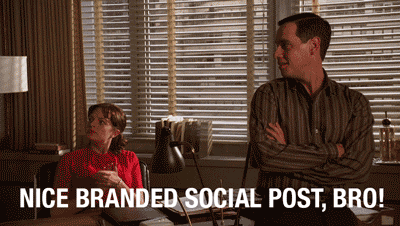
What Makes An Awful Brand?
My fingers are starting to hurt from dropping all this knowledge, so let’s make this section nice and concise. Here’s all you need to remember: a bad brand is like a DNR; there is virtually no bringing it back to success.
But also… a bad brand Does Not Resonate.
We love five-part listicles around here, so here are five major mistakes you could be making to cause your brand to not resonate with your audience:
- You misunderstood your audience. The ability to sell ice cubes to eskimos might be a great way to tell if someone is a convincing salesperson, but the decision to market themselves only to eskimos is an indicator of one of two things: unrelenting bravado and stupidity, or a simple, blissful unawareness of families who go through the ice in their ice maker reservoirs by 8 A.M.
- You focus only on visuals. I can only hope that if you are reading this obscure bullet in this particular list, you have read at least some of the rest of this article. If so, then you know visuals are only part of the equation. Stick only to it and your brand will be hollow and patients will see right through it.
- You are inconsistent. (Woah, deja vu.) We covered this like 20 seconds ago. Inconsistency is bad, consistency is good. If you are consistent, you are more reliable, trustworthy, and more genuine. If you can’t nail down those fundamentals, your brand, as it stands, is hopeless.
- You don’t stand out. Please, for the love of all that is sacred in this world, do not use a stethoscope in your branding. Or a bold “+” sign. Don’t be the seventh “Aesthetic Center of Florida” if you want to ever grow beyond, well, Florida, and don’t ever rely on words like rejuvenate or youthful is your branding or naming ideation.
- You didn’t consider trademark or social handle availability. Imagine investing thousands of dollars into developing a new name and brand just to find that some 13-year-old kid took your handle on all social media channels for his gaming community of 12 subscribers. Sure, you can probably find a workaround for a social handle, but trademarks are much more rigid. You don’t want to mess around with those. How do you avoid this problem? You check them before you commit. It’s as simple as that.
TL;DR
Your brand is more than your name, dummy. Be more creative than blue and white as your colors. Branding is built on three tenets: connection, uniqueness, and viscerality. Psychological components like associations and identity are hugely important, but so are technical components like brand guidelines and consistency. Give your brand as much human characterization as possible, and don’t be afraid to be strategic about who your brand is and the audience you want to reach. If you are going to be a smart-ass brand, be good at it. But regardless, be clear about how you communicate with the world so you are a genuine and reliable resource. For the love of everything sacred, make sure the social media handles and trademarks are available before you commit.
Don’t Be An Awful Brand
Now you know how incredibly easy it is to create a good brand, right? …Right?
Just kidding, I know it’s a bit overwhelming and possibly even a little discouraging, but the reality is that in this day and age, it is very hard to get by without good branding.
And it’s even harder to thrive.
So you, unfortunately, kind of have to struggle through.
But if you decide you need a hand, give Incredible a call at (800) 949-0133 or schedule a one-on-one with us. As always, our educators are here to answer any questions you have, anytime, for free.
If you’ve done your calming meditations and are ready for some more info, check out Part 2 of this series, where we explore whether or not your brand actually matters.
(Spoiler alert: it does.)



